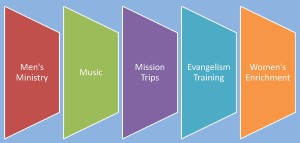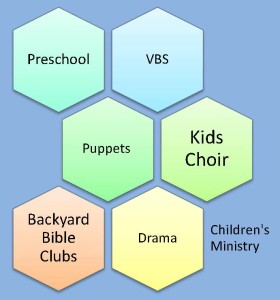Between Medium and Mega lies the land of the Large Church and the Very Large Church. For many church volunteers, this is the Land of the Happy Dance for at least three reasons:
1. Volunteers leaders are needed and supported. By the time you get to the mega church, many volunteer leadership positions have been taken over by pastoral staff, support staff, and even interns. But the large church still relies on volunteers to lead volunteers. These leaders often work closely with the support staff (ministry assistants and shared secretaries). In fact, it is not unusual to see volunteer leaders hired onto the staff as the church grows to the next level.
2. Volunteers can develop an area of interest. Unlike the small church, where the jack-of-all-trades is crucial, the large and very large churches have room for specialists. Musicians who aren’t professionals, for example, can shine in a variety of roles without feeling guilty that some other ministry of the church is struggling. Volunteers gain experience and expertise, but they don’t have to be exclusively dedicated to a niche.
3. Volunteers appreciate participating in programs that are done well. Benefits come from having more people, the leadership of well-trained staff, and more resources (financial and otherwise). The church doesn’t hesitate to foot the bill for training and workshops. And the volunteers get positive feedback from church members who appreciate the quality of the music, children’s activities, teaching, interior décor, etc., etc.
Right Fit
Volunteers don’t always know what they are looking for, but they feel the difference when they find the right place to serve. Large and very large churches aren’t right for everyone, of course. I always think about the question of whether you want to be a big fish in a little pond or a little fish in a big pond — assuming that being a big fish in a big pond isn’t one of your options.
So a few questions are in order:
Are you a jack-of-all-trades?
Are you a professional in some field and do you want to use that expertise in a volunteer capacity at church?
Do you like feeling that you have made a difference in whether a ministry will continue to function?
Do you put a high value on excellence above other things?
Are you more concerned with finding a place for everyone, even those with limited skills?
These are the trade-offs that volunteers consider, whether they think about them consciously or not. It helps when the volunteers and their leaders are aware of what the trade-offs are. In fact, they may even launch their happy dance!




